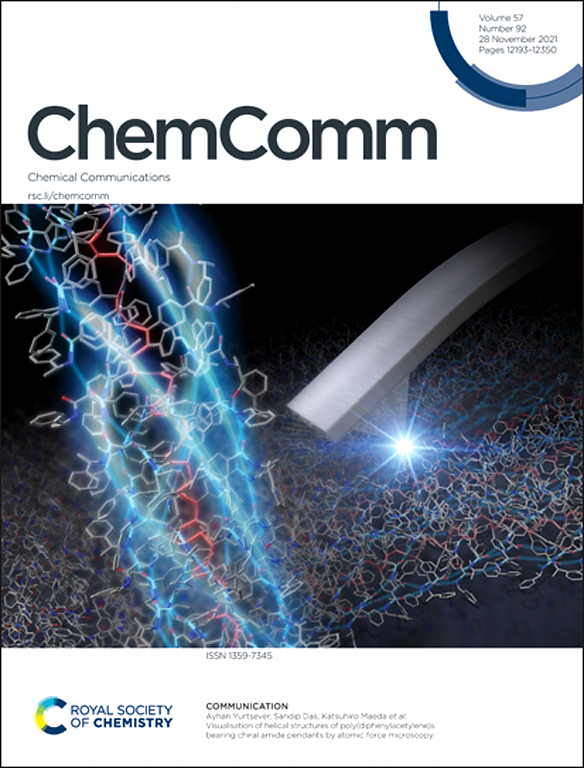利用3D打印铜与石墨烯和六方氮化硼复合材料的析氢反应
IF 4.2
2区 化学
Q2 CHEMISTRY, MULTIDISCIPLINARY
引用次数: 0
摘要
设计可扩展、高效的电催化剂对于绿色制氢至关重要。在这里,我们采用直接墨水书写(DIW) 3D打印技术,利用精确的孔隙率控制和界面工程来增强析氢反应(HER)性能,制备了石墨烯(Gr)和六方氮化硼(h-BN)的cu基复合材料。diw打印的Cu- gr复合材料优于Cu- hbn和原始Cu,在20 mA cm⁻²时的过电位为129 mV,塔菲斜率为125 mV dec⁻¹,并且在10小时内具有出色的稳定性。改进的电导率,电荷传输和活性位点暴露驱动优越的催化活性。计算研究证实,Gr(或h-BN)提高了吸附焓,促进了催化相互作用。这项工作突出了diw打印的Cu-Gr复合材料作为可扩展的,独立的和可持续的HER电催化剂。本文章由计算机程序翻译,如有差异,请以英文原文为准。
Hydrogen evolution reactions using 3D printed composites of copper with graphene and hexagonal boron nitride†
The design of scalable, efficient electrocatalysts is essential for green hydrogen production. Here, we employed direct ink writing (DIW) 3D printing to fabricate Cu-based composites with graphene (Gr) and hexagonal boron nitride (h-BN), utilizing precise porosity control and interface engineering for enhanced hydrogen evolution reaction (HER) performance. The DIW-printed Cu–Gr composite outperforms Cu-hBN and pristine Cu, achieving an overpotential of 129 mV at 20 mA cm−2, a Tafel slope of 125 mV dec−1, and excellent stability over 10 hours. Improved conductivity, charge transport, and active site exposure drive superior catalytic activity. Computational studies confirm that Gr (or h-BN) enhances the adsorption enthalpy, promoting catalytic interactions. This work highlights DIW-printed Cu–Gr composites as scalable, self-standing, and sustainable HER electrocatalysts.
求助全文
通过发布文献求助,成功后即可免费获取论文全文。
去求助
来源期刊

Chemical Communications
化学-化学综合
CiteScore
8.60
自引率
4.10%
发文量
2705
审稿时长
1.4 months
期刊介绍:
ChemComm (Chemical Communications) is renowned as the fastest publisher of articles providing information on new avenues of research, drawn from all the world''s major areas of chemical research.
 求助内容:
求助内容: 应助结果提醒方式:
应助结果提醒方式:


